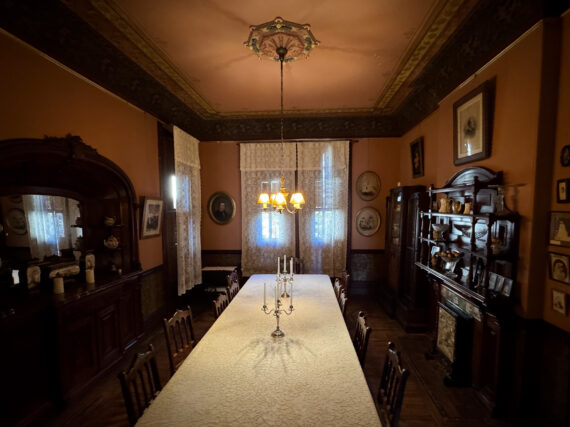This is my first time posting a recipe on East Bay Yesterday, but if there’s one thing I’ve learned from reading food blogs, it’s that you always have to bury the recipe way down at the bottom, after a lengthy preamble. So if you’re just here for the turkey instructions, feel free to start scrolling. However, my interest in exploring historic Oakland cookbooks in preparation for Thanksgiving led me to this beautifully illustrated collection, so if you have an appetite for the story behind the dish, bon appetit…

The “West Oakland Soul Food Cook Book” was created during the late 1960s as a fundraiser by a group of volunteers associated with various projects connected to the Peter Maurin Neighborhood House. These projects included a community book club, a nursery school, and a low-income home rehabilitation program. The recipes are mostly rooted in Southern styles, which makes sense, since the majority of Black folks who lived in Oakland during this era had either arrived as part of the Great Migration or were the children of that generation.

During the 1940s, Oakland’s Black population ballooned from about 8500 at the dawn of the decade to nearly 48,000 by 1950. This rapid growth was driven by massive industrial operations, like Moore Dry Dock, a shipbuilding complex that employed about 35,000 workers at its peak, during World War II. African Americans looking for opportunities beyond the Jim Crow South hopped on trains bound for Oakland, lured by the promise of jobs at the shipyard. These migrants, primarily from Texas, Louisiana, Oklahoma, and Arkansas, brought their recipes with them…

As the neighborhood developed throughout the 1950s, local chefs began serving their “home-style” food at restaurants and cabarets, like the legendary Slim Jenkins Supper Club, which popped up along West Oakland’s bustling 7th Street corridor. Along with the food, another Southern import that defined the neighborhood was the music. West Oakland became known as “the capital of West Coast blues” because local sensations like Sugar Pie De Santo and national stars like Etta James and BB King could inevitably be found playing raucous sets at spots like Esther’s Orbit Room well into the night.

As the 1950s progressed, local unemployment soared after the shipyard shut down and many factories fled Oakland (a stronghold of organized labor) for “whites-only” suburbs. The neighborhood became increasingly impoverished and dilapidated due to systemic racism in the forms of disinvestment (i.e. lack of access to bank loans) and “urban renewal” projects that demolished “slums” in order to make room for massive new infrastructure, such as BART, Interstate 880, and a US Postal Service facility. In 1961, a group of self-described “non-professionals” transformed a building that was scheduled for demolition into a “Hospitality House” where they could serve free food to “transient men,” according to the “West Oakland Soul Food Cook Book’s” introduction. After the first Hospitality House was torn down, this group of volunteers launched another soup kitchen that “served 200 meals per day and sheltered 75 homeless men a night.” The Peter Maurin Neighborhood House was named in honor of an activist who co-founded the Catholic Worker Movement, a charity-oriented philosophy that has been described as “Christian anarchism.”

The soup kitchen spawned a series of other grassroots projects driven by the needs of the community. The “Cook Book” describes the trajectory of a typical effort: “The major recreation center for the area was torn down and not replaced so the children had no place to play and the families had no place to meet together. The group, learning that the residents were interested in having a center, rented and renovated an old shoeshine parlor.”

As the programs, such as a co-op nursery, grew more ambitious, a Board of Directors was formed to secure funding from government and philanthropic sources, such as the Ford Foundation. However, the “West Oakland Soul Food Cook Book” is an example of how Neighborhood House and its satellite projects still relied heavily on volunteers from the neighborhood. “People in the community working together on these projects have contributed these recipes,” according to the introduction.

If you want to celebrate this legacy at your Thanksgiving table tomorrow, here’s Mrs. Mathilde Fontanette’s turkey recipe…

But if your local grocery store is already sold out of birds, there’s another option in the cookbook for a main course that relies on a creature that can be easily spotted throughout Oakland if you keep your eyes peeled at night…

PS: If you want to hear the incredible story of a woman who cooked soul food in the East Bay for more than six decades, here’s my episode with Miss Nellie Ozen.
East Bay Yesterday can’t survive without your support. Please donate to keep this project alive: www.patreon.com/eastbayyesterday




